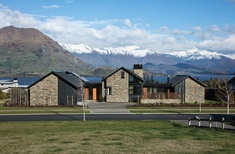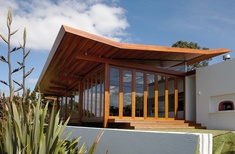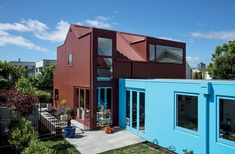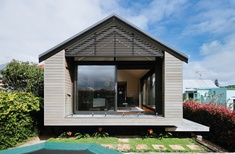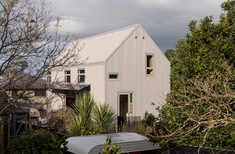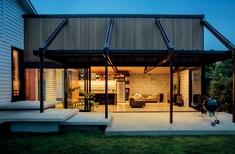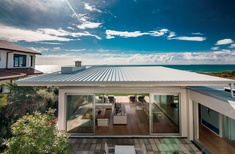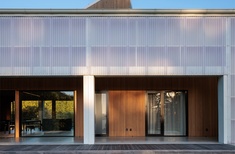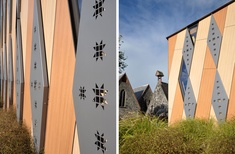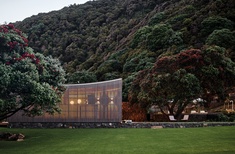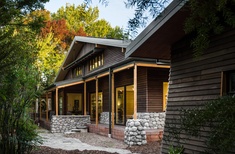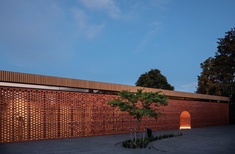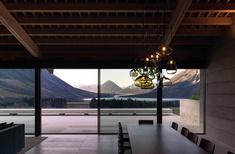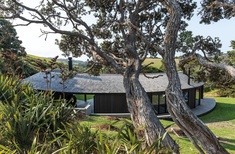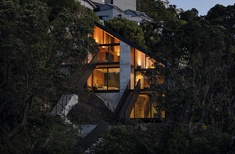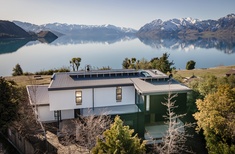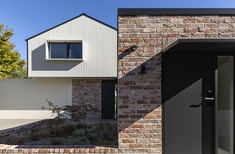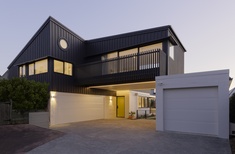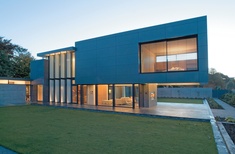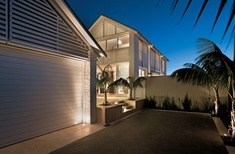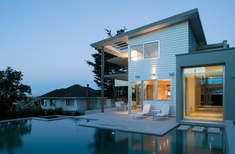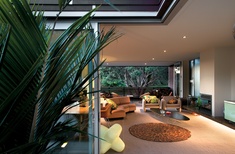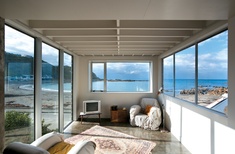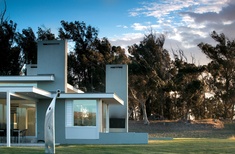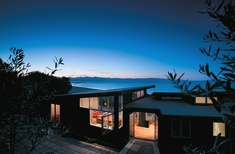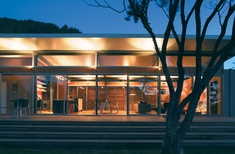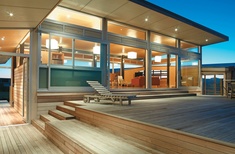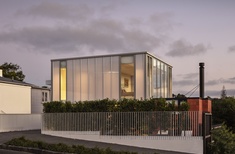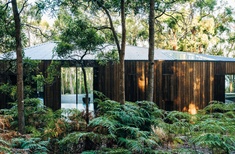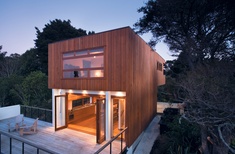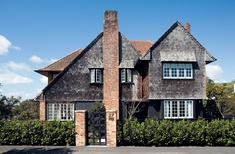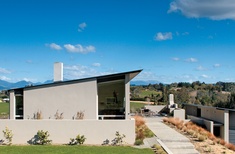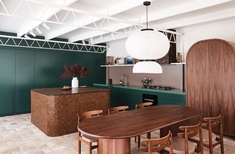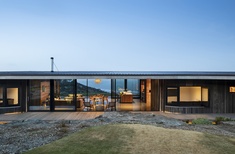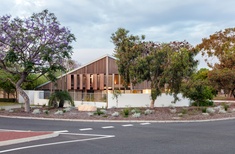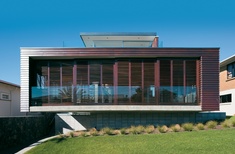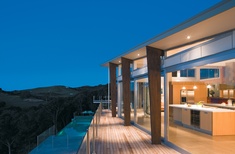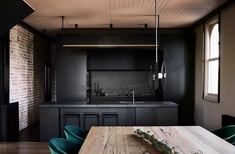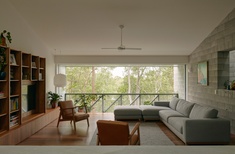Projects
RSSMade up of three gable forms, this lakeside home in Wanaka has incredible views from every room. First published in 2018.
A Herbst Architect house with a dramatic gull-wing-shaped roof offers views over the Bay of Islands from every room. First published in 2018.
Situated in the heart of Christchurch, this distinctive barn-red house is very hard to miss. First published in 2018.
A few surprises lurk behind the front door of this seemingly unassuming villa in Parnell, Auckland. First published in 2018.
Matuku Moana, by Studio Brick Architects is a home shaped less by a formal brief, and more by evolving circumstance and intuition.
A young family commissioned their best friend to create a 1970s’ Brazilian jungle pad in the Auckland suburb of Sandringham. First published in 2017.
Rogan Nash Architects designed this beachside holiday home to be considerate of its space in nature and surrounding neighbours. First published in 2015.
A willingness to explore new concepts for outdoor living sees a re-imagining of the Kiwi camping experience.
Ngāmotu New Plymouth local, Kareen Durbin, writes on the power of three regional buildings of distinct character and uses, to promote cross-cultural connection.
John Walsh explores Omata Beach House, winner of the 2023 Sir Ian Athfield Award for Housing, by Herbst Architects and finds a pavilion on a plinth that seems as though it’s grown out of the land.
In the Big Cottage, Bob Burnett Architecture merges a classic Californian Bungalow style with a Japanese design ethos in this Christchurch home.
Pip Cheshire navigates the striking arrangement of formal and informal space at RTA Studio’s Zed House, located in the affluent suburb of Fendalton, in Ōtautahi Christchurch.
Jasper van der Lingen is entranced by Warren and Mahoney’s Flock Hill Station in Canterbury — in a dream-like setting of silent mountains, still lakes and framed skies.
Jon Rennie finds delight in architect Belinda George’s elegant response to her client’s childhood memories of campsite living.
Guy Marriage is impressed by the joy of Patchwork Architecture’s three-dimensional, Escher-like cliff-side edifice, Party Wall, in Wellington’s Kelburn.
A dream manifested into reality at an unlikely time for this carpenter-come registered architect as he completed his first house amidst Covid lockdowns and delays.
This new home built on a rare subdivided section in Auckland’s Mt Albert is a prime example of densification done well.
A clever floorplan allows for maximum outdoor space while providing sea views and boat storage on a limited site.
In this large Christchurch house, Wilson and Hill Architects continue their exploration of contemporary Modernism, first published in 2006.
RTA Studio navigates through a minefield of rules and regulations at Torpedo Bay, first published in 2006.
A Remuera house by Godward Guthrie Architecture is respectful but not too formal, first published in 2006.
Working with design-literate clients, and his builder brother, Michael Melville has fused seventies suburban optimism and contemporary experimentation, first published in 2006.
On Wellington’s wild southern shore Rafe Maclean has designed a brave little house for his family, first published in 2006.
The art in this Gerald Parsonson house in the Wellington hinterlands is visible on the inside and the out, first published in 2006.
This 2006 home from Arthouse Architecture sits above a Nelson beach and demonstrates a relaxed form of maritime modernism.
Godward Guthrie’s Coromandel bach from our 2006 archives is an exercise in self-containment and self-conscious nostalgia.
At ostentatious Omaha Aimer Naismith Architects have acknowledged the simpler bach tradition with the design of this home, first published in 2006.
Architect Sam Caradus from Crosson Architects explores and contrasts material and form in the Te Kāhui Whaihanga NZIA Local Award-winning Light and Clay.
On an island escape, in an area populated by white gums and stands of grass trees, this holiday home for a young family serves as an elegant living platform that offers many ways to enjoy its bush setting.
Look back at this home from 2006: Xsite Architecture’s wooden ark is tailor made for this slightly alternative, somewhat post-hippy site in one of the farther reaches of West Auckland.
From the archives: On a fine old Auckland street, Robin O’Donnell has extended the life of a time-worn Arts and Crafts house with ‘good bones’.
Sited on a grassy spur above Waimea Inlet this house, first published in 2006, by Jeremy Smith looks east to Tasman Bay and west to the Kahurangi mountains.
An earthy colour palette brings the surrounding bushland inside this laidback yet sophisticated refuge that playfully acknowledges its mid-century modernist roots.
This year’s Interior Awards finalist ‘House on a Rock’ takes its interior cues from the surrounding landscape, resulting in a warm, handcrafted aesthetic designed with family in mind.
Contemplative and brave, this new house on a prominent corner site eschews the suburban status quo to connect its occupants with their community and climate.
From our 2007 archives: With architect John Mills as guide two Wellington clients brave Doubt and Despair to build their House Beautiful.
Revisit a bold and brassy house by Guy Tarrant, first published in 2006, which seems eager to grapple with its suburban Auckland street.
From 2006: London is not an easy city to leave, but one family decided on a new start, in a new place, in a new house. Now they live on a hill above a Waiheke bay in a contemporary home designed by Geoff Richards.
Embracing the character of its 1890s shell, this family home features an unusual combination of materials that is at once dark, moody and surprisingly warm.
An intimate knowledge of both the steep site and the inhabitants shaped the design of a connected family refuge in a eucalypt forest on the outskirts of Brisbane.

